| Football Gear Essentials |
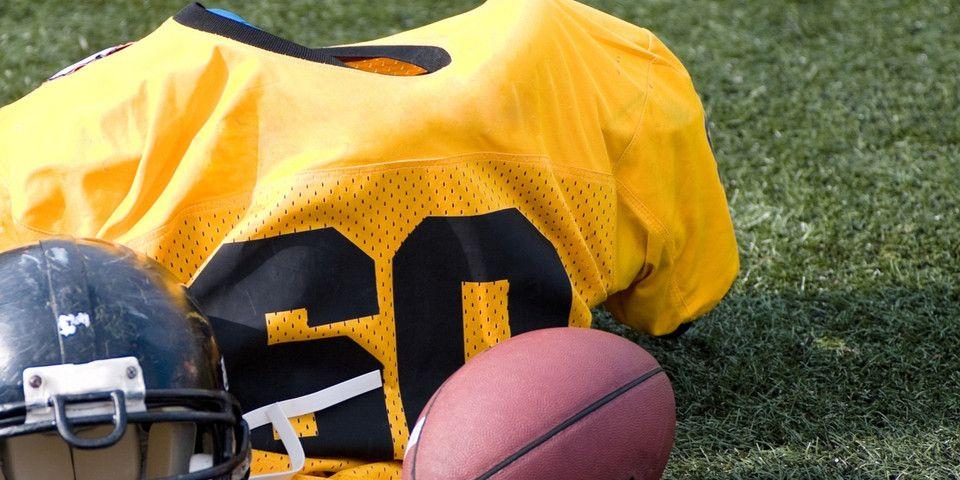
Football not only requires hard work and practice, but also the correct gear. To prevent injuries and maximize performance on the field, football players need to wear and use proper equipment.
Whether you’re a player or a parent, this checklist will help you get ready for the first practice of the season.
1 – Helmet
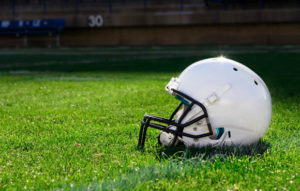
There are two types of football helmets that provide adequate protection for the head: air helmets and suspension helmets. Players must wear one of these helmets at all times during practice and games.
The air helmet utilizes an inflatable device that adjusts specifically to the shape and size of the player’s head. Inflate or deflate the helmet with a pump or tighten the chinstrap to adjust the fit.
A thick padded material forms the inner lining of the suspension helmet, while the chinstrap adjusts the fit of this helmet.
Note: Whichever helmet you choose, make sure it fits snuggly on the player’s head.
2. Facemask
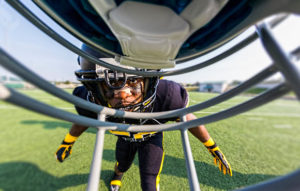
A facemask, as the name implies, protects the player’s face from contact injuries. It resembles a cage on the front of the helmet made of steel covered in plastic. Determine the type of facemask needed based on the player’s position.
Quarterbacks, defensive backs and wide receivers usually choose the two-bar box cage facemask. Running backs, tight ends and linebackers often prefer the four-bar closed cage facemask because it gives more protection for hitting and blocking. The full mask has six bars, which gives the face maximum protection but limits vision. Offensive and defensive linemen tend to like the six-bar because of the close, hard contact they encounter on most plays.
3. Shoulder Pads

Shoulder pads vary in size and style to accommodate the size and position of the player. Make sure they are both comfortable and non-restrictive. It’s essential the shoulder pads fit the player correctly and properly each time they wear them. Fasten all straps and buckles, and wear additions such as neck rolls, cowboy collars and shock pads to prevent injury.
4. Cleats

Football cleats should be comfortable, sturdy and appropriate for the level of football. There are three types of football cleats: high-tops, mid-highs and low-tops. Mid-highs and high-tops support the ankles, lowering the chance of injury. Low-top cleats provide greater mobility but not much stability around the ankle—making them unsafe for younger athletes.
All three styles offer molded bottoms or screw-in cleat bottoms. Molded cleat bottoms are mandatory in youth football for players ages 6 through 12. Players 13 and older can choose either screw-in cleats or molded bottoms.
5. Mouthguard
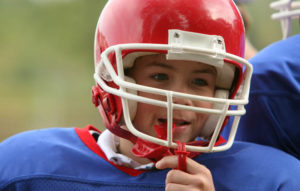
All levels of play require players to wear a mouth guard, but the style is up to the individual player. There are three kinds of mouth guards to choose from.
The basic mouth guard protects the teeth and attaches to the facemask by a strap. The boxer style mouth guard is strapless and fits into the mouth to protect the teeth. (Kids prefer this style so they can wedge their mouth guard between the facemask and helmet, like the pros do, when they aren’t using it.) The lip guard provides protection for the teeth, as well as the lips, and attaches to the facemask with a strap.
6. Footballs
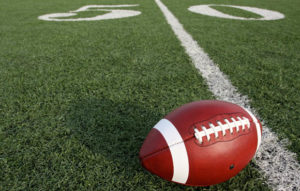
The ages of the players determines the type of football—always use the kind of football certified for the level of play.
Ages 6 to 8:
Use smaller footballs made of all rubber. This helps younger kids throw, catch and handle the ball. It’s easier to grip a rubber ball in wet climates, and the size makes it easier for small hands.
Ages 9 to 12:
Use a slightly larger ball made of both rubber and leather. This football is designed specifically for “medium” sized hands.
Ages 13 to 18:
Use a ball made of all leather. This larger football is the size college players use, just one size smaller than NFL footballs.
More information on footballs can be found here
7. Football Gloves
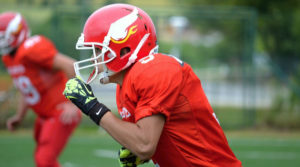
Receiver gloves aid in catching the football, particularly during cold weather.
Lineman gloves have more padding and help protect of all parts of the hand.
FOOTBALL GLOVE SIZE CHART
STEP 1: MEASURE YOURSELF
Football glove sizes are determined by hand circumference. See the measuring instructions provided and refer to the appropriate size chart below to determine your football glove size. To determine your football glove size, measure the circumference of your hand by wrapping a measuring tape snug around your knuckles.
STEP 2: FIND YOUR SIZE
Once done, locate your measurement in the men’s or youth size chart to find your correct football glove size.

8.Thigh, Hip and Knee Pads
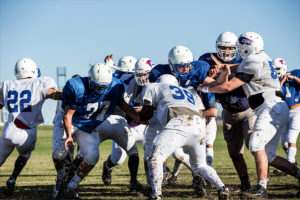
Thigh pads are the largest leg pads and protect the thighs from collisions. Knee and hip pads as well as elbow pads cushion blows to those specific areas.
Football Thigh, Hip, and Knee Pads Buyers Guide
What are the differences between slotted and snap-in pads?

Thigh, hip, and knee pads are designed to fit into or onto a player’s football pants or football girdle. Players typically wear one of two types of pants; one with snaps for their pads to attach to, or slots in the fabric where pads can slide into.
Slotted or snap-in pads tend not to vary in quality, so a slotted pad is no different than a similar-quality snap-in pad. The difference only lies in how they attach. For instance, a snap-in hip pad would attach to the matching snaps on snap-on football pants, while a slotted hip pad would attach to the hips of a pair of football pants with a belt or in slots on the pants. The choice between pads and pants is typically based on personal preference or budget.
Some players use Integrated Pants or Integrated Girdles, with the pads permanently sewn in. These do not require additional padding. Like with most football gear, make sure to select adult pads or youth pads, depending on what level you’re playing at.
What is included in 7 piece complete pad sets and 3 piece sets?
All of the pads you need for your lower half are included in complete, 7-piece pad sets.

With complete 7 piece pad sets, you get:
- 2 hip pads
- 2 thigh pads
- 2 knee pads
- 1 tailbone pad
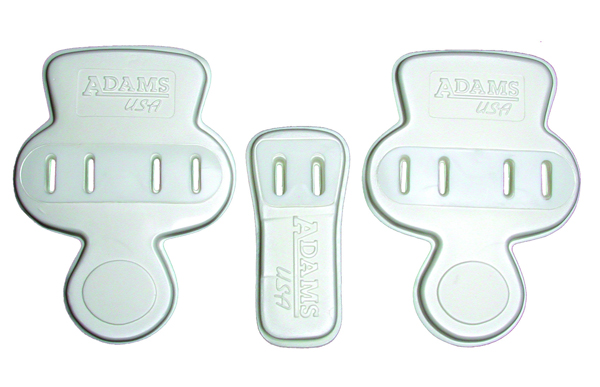
A 3-piece pad set includes everything for your hip-area, including:
- 2 hip pads
- 1 tailbone pad
These sets can be very cost effective if you need a complete pad set or are replacing many pads.
What kind of football pants do I need with my football pads?
You have three basic choices when it comes to football pants:
- Integrated pants
- Slotted football pants
- Snap-In football pants
Integrated pants do NOT require additional football pads. They feature an entire 7 piece set sewn in permanently, so you’re good to go right out of the package.
Slotted pants require slotted or belt-attached pads, to fit directly into the slots on the pants.
Finally, Snap-In pants require snap-in pads, that attach onto the pants with durable snaps.
No one type of football pants or pads provide any better protection than the other, and typically it is a matter of personal preference and performance needs.

